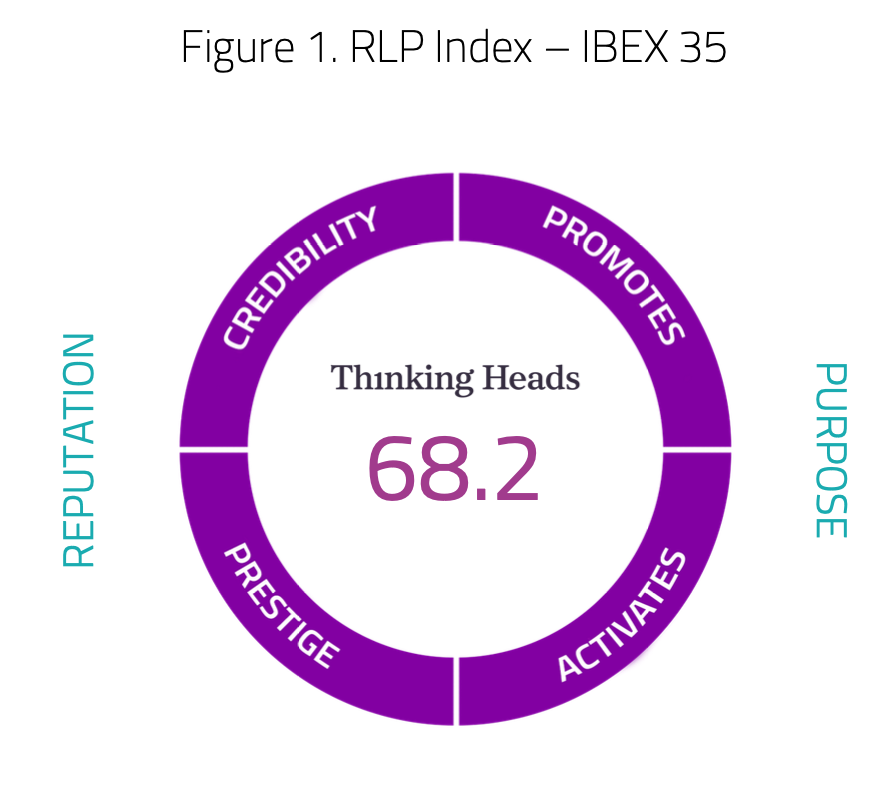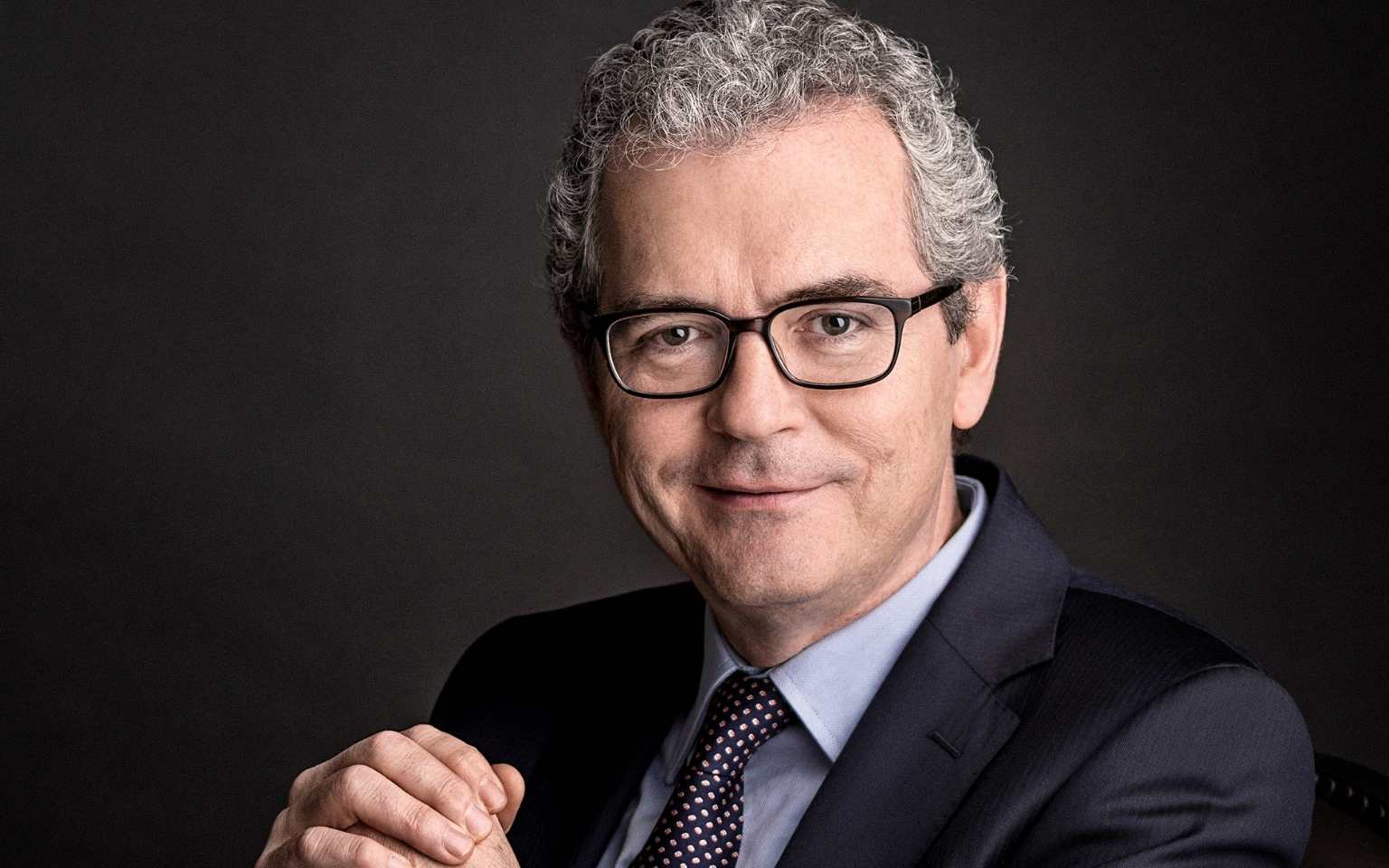As a valuable indicator for business management, corporate reputation requires a complex analysis, especially when we realize the leader has a lot to say about said reputation. The positioning of the leader is an increasingly important priority task on the agendas of Communication and Institutional Relations departments, as well as of those in charge of reputation management.
To this, we must add the growing influence social aspects that materialize in a greater commitment to the environment and society exert on the organization as a whole.
According to the study “Assessing the Reputation of Purpose-Driven CEOs: a detailed analysis of IBEX 35 executives” conducted by Thinking Heads, when society perceives the leader of a company as committed to the company’s purpose, the company improves its reputation by an average of 28.4%.
How we measure reputation


To measure the rating of different leaders, Thinking Heads uses the RLP index (Reputational Leader with Purpose index), a formative metric that links traditional reputation and purpose items, measured through the leader’s activities inside and outside the company.
On average, IBEX 35 leaders receive a score of 68.2 points on the RLP index, i.e. a high reputational pass (from 60 to 100 points). Although all leaders pass and half of the CEOs achieve a good reputation, we will analyze the case of the leader with the highest reputation score in order to try and draw useful conclusions, such as why he is the one who receives the best score and what aspects should be imitated.
The highest-rated leader
The most popular leader according to the experts is Pablo Isla, CEO of Inditex, with a score of 76.6 RLP points.


What is the reason for his good reputation?
A good reputation is part of a process. Firstly, the receiver carries out a rational evaluation that has to do with management results, leadership or social responsibility; secondly, the receiver transforms this information into a positive or negative emotion -how it makes them feel-; it is then that reputation appears -how they perceive us- which, finally, can lead to a series of actions -purchase, recommendation, brand defense, etc-.
What can you add to this aggregate of elements that end up defining how we are perceived by society? From appearances in the press, events or conferences to external recognitions such as being named the best CEO in the world by Harvard Business Review or CEO of the decade by Forbes magazine; business decisions such as refusing to carry out ERTEs during the pandemic or the digital leap that the firm he represents has undertaken in recent years; and of course, the role of purpose, key for a consumer who observes reality from a much more demanding social perspective than a year ago.
The role of purpose
The case of Pablo Isla is especially illustrative with regard to purpose, since it demonstrates how it directly impacts the leader’s reputation, and consequently, his company. In the indicator that measures the defense of purpose, Isla scores 80.9 points out of 100: in other words, his reputation is perceived as very good.
The relationship between Isla’s purpose and his public perception is clear, with quite good results in his case. Logically, this relationship applies to all business leaders: for each point increase in recognition of purpose, an increase of 0.23 points is expected in the leader’s reputation.
It is no coincidence that Pablo Isla’s reputation exceeds the average of IBEX 35 executives by 8 points, and if we want to make an instructive reading and draw applicable lessons from this case we must start with the purpose.
Purpose makes a company operate beyond its main function and take responsibility for the effects that its activity may have on its surroundings, the environment and its stakeholders. Its management is key for not only the development of the business activity and, as we have seen, to generate brand equity, but also to answer what is possibly the question of this decade: why we do what we do.
CONTACT US
Madrid - España
+(34) 91 310 77 40
Miami - Estados Unidos
+1 (305) 424 13 20

